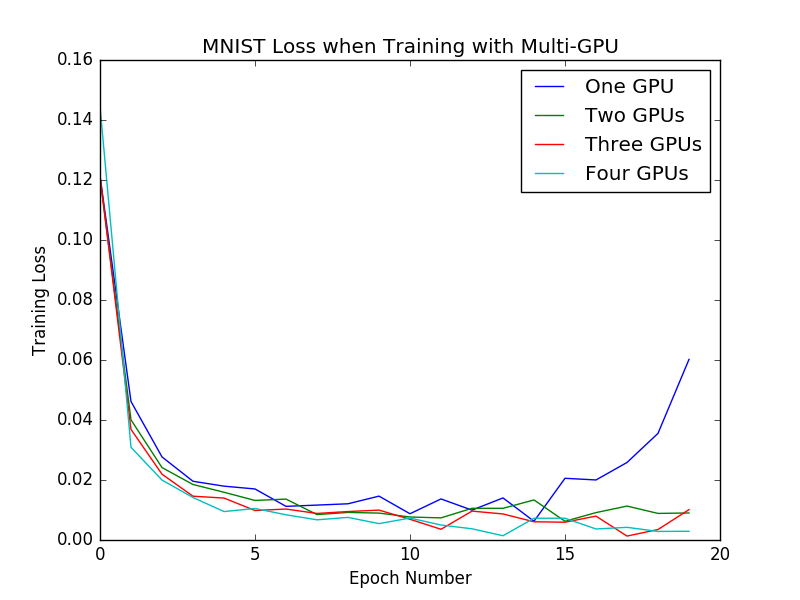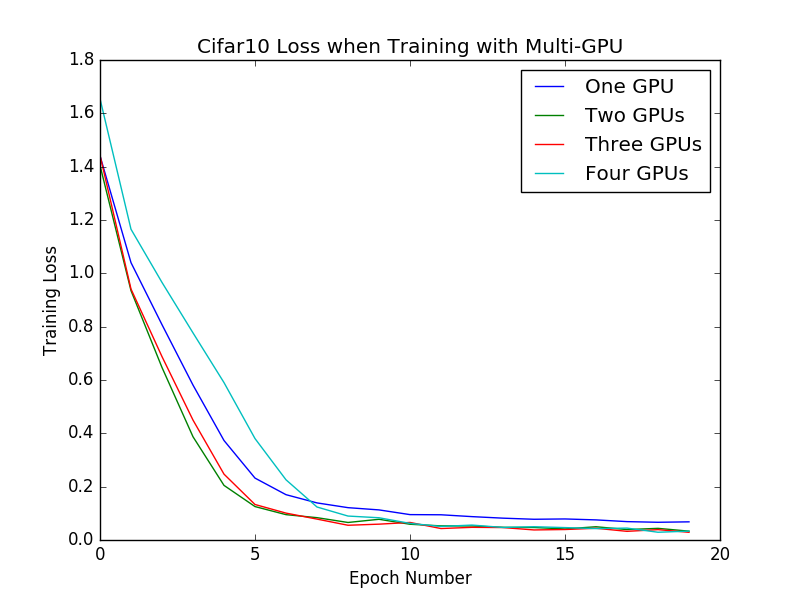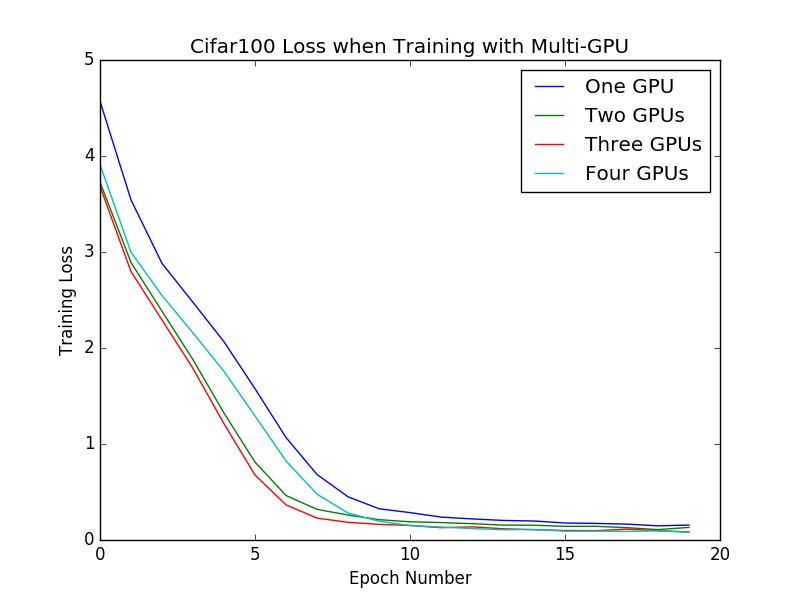This repository was put together to prototype the (probably) easiest way to perform multi-gpu training using Keras with a Tensorflow backend, and largely just consolidates a couple of different pieces of code that were already available online.
The multi-gpu-keras-tf package is pip installable. After cloning the repository, from within the top level directory type:
pip install multi-gpu-keras-tfNote: This will install Keras, but will not install some of the other dependencies that the package depends upon. For a full list, see environment/environment.yml.
The environment used to develop this repository can be found in environment/environment.yml, as can a number of other install files that may be of some use (GPU set up an Ubuntu 14.04 machine, docker env creation, etc.).
Once the environment is setup and GPU configuration is all set, you can run the scripts/train.py script to train a model on MNIST, Cifar10, or Cifar100. Simply pass in gpu IDs via the --gpu flag, a training config via the --config flag (see the example_configs folder), and an output directory via the --output_dir flag. For example, from the top level of the repository, run:
./scripts/train.py --config example_configs/mnist.yml --gpu_ids 0 1 2 3 --output_dir ~/home/sallamander/mnistThis will train an MNIST model on GPUs 0, 1, 2, and 3. Note that there might need to be changes made if your GPU setup is different.
If you used the train script in the repository, you can evaluate the model by running the scripts/evaluate.py script. Simply pass in the output direcory that the model results were saved to:
./scripts/evaluate.py --model_dir /home/sallamander/mnistNote: this does not run on multiple GPUs.
To prototype multi-GPU training, I tested a single model (VGG) on MNIST, Cifar10, and Cifar100. I verified that the models were able to run on 1, 2, 4, and 8 GPUs, and that they were in fact able to train (see training losses below). I did not pay any attention to the validation losses (or accuracies) and did not try to tune the models, as I've left that for another day.
For the time being, I don't have any future plans for this repository. However, I could imagine next steps involving building out and testing other models, studying convergence patterns, etc.


